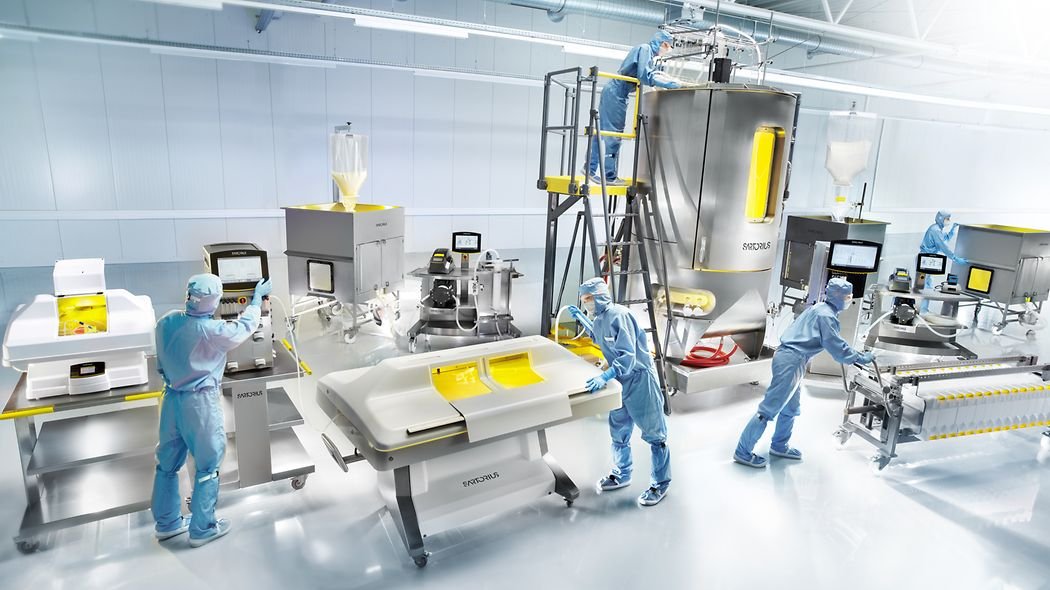Biopharmaceuticals: Faster to Market
21 April 2022 | Thursday | Opinion

Source : Sartorius Blog.
To combat these challenges, biopharmaceuticals that are produced with the help of living organisms are playing an increasingly important role. However, their development and manufacture are complex, expensive, and time-consuming. With innovative analytical technologies, laboratory equipment and bioprocessing solutions, Sartorius helps researchers around the world to speed up the development and production of drugs.
. To combat these challenges, biopharmaceuticals that are produced with the help of living organisms are playing an increasingly important role. However, their development and manufacture are complex, expensive, and time-consuming. With innovative analytical technologies, laboratory equipment and bioprocessing solutions, Sartorius helps researchers around the world to speed up the development and production of drugs.
This article is posted on Sartorius Blog.
What are biopharmaceuticals?
A well-known example for a drug that is produced in the traditional way is acetylsalicylic acid. It is based on small molecules of only a few atoms, manufactured by chemical synthesis and administered as a tablet. In contrast, biopharmaceutical active ingredients are produced using living organisms — such as bacteria, yeasts, or mammalian cells — and consist of very large molecules with up to 20,000 atoms. They are administered by injection or infusion. Vaccines against the coronavirus are famous examples for biologics, but they also include monoclonal antibodies, gene and cell therapies, blood plasma, tissues, and many others.
Their advantage: biopharmaceuticals only bind to specific cell receptors and thereby have a more targeted effect in the body than other drugs.
Their advantage: biopharmaceuticals only bind to specific cell receptors and thereby have a more targeted effect in the body than other drugs. They open up new therapeutic options for patients with severe or rare diseases and are particularly promising candidates in the fight against cancer.
Since the first biopharmaceutical, human insulin, was launched about 40 years ago, the market has been evolving at an exceptionally fast pace. In 2020, six of the ten best-selling drugs worldwide were biologics, and biotechnologically produced active ingredients accounted for about one third of new drug approvals in the U.S. However, biopharmaceuticals are also more complex than chemical drugs.
1 in 10,000: Discovery and manufacture of biopharmaceuticals are complex
The rate of finding a successful candidate gives an idea of how complex and time-consuming biopharmaceutical research and development is: only one in 10,000 potential drug candidates makes it to the market as a new treatment.
Only one in 10,000 potential drug candidates makes it to the market as a new treatment.
Getting there is a long journey, involving thousands of experiments, sample preparation procedures and analyses. The whole process can easily take a period of more than 10 years, including several years of research and discovery, testing, trials, and approval (see below). On average, it costs more than 2 billion euros to bring a new drug to the market.
As a consequence, biopharmaceutical medications are expensive. To provide an example: Currently, the most expensive drug in the world is a gene therapy used to treat spinal muscular atrophy (SMA). Patients with SMA have a genetic defect that cause nerve cells in the spinal cord – motor neurons – to die. As a result, muscles no longer receive signals from the brain and become weaker and weaker until they eventually stop functioning, making the disease life-threatening. Symptoms, such as difficulties to swallow or breath, typically start to show in the first few weeks or months of life and often lead to death already during infancy. Children with milder types of SMA may live into adulthood but never learn to stand or walk.
Thus far, there is no cure for SMA. However, a gene therapy has been developed that targets the underlying root-cause of the disease - the missing or nonworking SMN 1 gene, which is essential for producing the specific protein that motor neurons need to survive. It is the first gene therapy for SMA that works as a one-time-only dose, given intravenously as an infusion. It is intended for the treatment of infants up to the age of two and needs to be administered early while there are still motor neuron cells remaining to preserve muscle function. Any damage already caused by SMA cannot be reversed. The treatment costs a seven-figure sum in the USA.
Our ambition: Accelerate the discovery and simplify the production of biologics
Ultimately, one of the biggest tasks in biopharmaceutical research and development is to significantly shorten the drug discovery timeline. Finding the most promising candidates early in the process is key to reduce costly trial and error processes.
Ultimately, one of the biggest challenges in biopharmaceutical research and development is to significantly shorten the drug discovery timeline.
Sartorius empowers its customers to accelerate drug discovery and development and simplify production. Premium laboratory instruments simplify meticulous and routine laboratory work and deliver reproducible results; innovative bioanalytical systems accelerate the identification of suitable drug candidates; highly automated microbioreactors help to determine the optimal growth conditions for cell cultures in parallel experimental series; and a broad portfolio of scalable products, such as bioreactors, bags, filters and chromatography systems, is available for the actual manufacture and purification of pharmaceuticals.
With its solutions, Sartorius helps scientists and engineers to enable the development of new and better therapies and more affordable medicine.
Most Read
- Biotech and Biopharma Industry Trends: What to Watch for in 2024
- Revolutionizing Drug Discovery: 15 AI Companies to Watch in 2024
- Pioneering Precision: Top 15 Clinical and Lab Diagnostic Companies to Watch in 2024
- 2024's Biopharma Roadmap: Top 24 Biopharma Trends to Watch in 2024
- Breakthroughs Unveiled: A Year of Groundbreaking Novel Drug Approvals in 2023
- Revolutionizing Tomorrow: Top 24 Emerging Biotech Innovations to Watch in 2024
Bio Jobs
- Leica Microsystems Announces Vacancy for Senior Imaging FPGA Testing Engineer in Singapore
- Glen Godresse Takes Helm as CEO of Menarini Asia-Pacific
- Eva van Pelt Joins Qiagen's Supervisory Board, Bringing a Wealth of Global Leadership Experience in Healthcare and Life Sciences
- Life Sciences Queensland Welcomes Dr. Kym Baker and Dr. Denise Hodge to Board Leadership
- Bayer appoints Nelson Ambrogio as new Head of Radiology Business at Pharmaceuticals Division
- Danaher Careers - Search Global Science and Technology Jobs
- Careers at MERCK Group
- Ajinomoto Bio-Pharma Services Announces Leadership Changes at US Facility
- Veranova Appoints Mike Riley as Chief Executive Officer
- Find your Job at Eppendorf
News
Editor Picks











